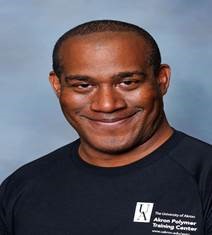*** Please note, each row and course# listed below is a separate, complete course. ***
Rubber Extrusion Technology
| Course# | Date | Time | Location | |
|---|---|---|---|---|
|
Coming Soon |
||||
Online Registration
CEU's: 0.8
Instructor: Mr. Christopher Paige
Course Overview
This course is intended to introduce students to Rubber Extrusion Technology which includes rubber extrusion terminology, definitions and diagrams. LCM, HAV and Microwave/HAV, Extrusion Screws, Extrusion Dies, Extrusion cooling temperature controls and post-processing equipment will also be discussed.
Elastomers, Fillers, Process Oils, Plasticizers and Curing Ingredients and compound details will also be reviewed.
Online Course Requirements
We want you to have a great experience participating in our remote (online) courses, and for that, you’ll need the right equipment and internet connection.
Minimum needs are:
- A broadband internet connection that has at least a 2 Mbps upload and download speed.
- A computer (PC or Mac) that can support the latest web browser versions.
- At least 4 GB of RAM and adequate hard drive space.
- A microphone and a speaker.
For more information, visit our Online Course Requirements webpage.
Instructor Biography:

Christopher (Chris) Paige holds a M. S. Degree in Plastics Engineering - 2005 (University of Massachusetts – Lowell) and a M.S. Degree in Polymer Chemistry – 1991 (University of Cincinnati). He is a member of Society of Plastics Engineers (SPE), American Chemical Society (ACS) and America Society of Materials (ASM) and has over 30 years’ experience, working in Industry. As a Laboratory Manager, at the University of Akron, Chris performed numerous hands-on plastics processing projects, for domestic and International corporate clients. He is a subject matter expert and has trained clients on Rubber processing (C.W. Brabender’s, 2-Roll Mills, Heat presses), Plastics Processing (Single and Twin-Screw Extruders, Extrusion Blown Molding, Injection Molding, Injection Blow Molding, Thermoforming, Vacuum Forming, blown film and cast film lines), Rubber formulations and Rubber Characterization (MDR, Moonie Viscometers, RPA) and Polymer Characterizations (Thermal Analysis, Mechanical Instron testing, microscopy and spectroscopy).
- Terminology and Definitions: Vulcanization, Extruder Equipment, Hot Feed Process and Cold Feed process.
- Process Diagram – The basic diagram of a Multistep Rubber Extrusion process and a Continuous Rubber Extrusion process.
- Rubber Extrusion Processes: Overview of Multistep Rubber Processes and Continuous Rubber Extrusion Processes.
- Multistep Rubber Extrusion: Hot Feed Process and Cold Feed Process.
- Continuous Rubber Extrusion: Ballotini, Electron Beam, Quartz-Hot Air, Steam Tunnel, Rotocure and Double Belt Press.
- Raw Materials Used for Rubber Extrusion: Elastomers, Fillers, Process Oils, Plasticizers and Curing Ingredients.
- Review of Rubber Extrusion Technology- Positives, Negatives and Potential Uses, Compound Details.
